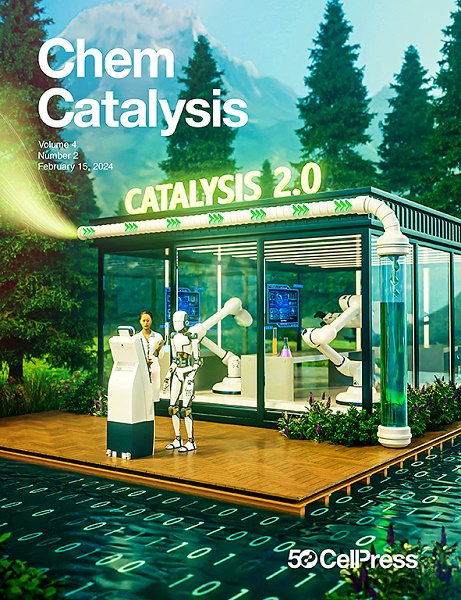聚合物基气体扩散电极在氧气存在下促进CO2的还原
IF 11.6
Q1 CHEMISTRY, PHYSICAL
引用次数: 0
摘要
电化学还原二氧化碳是一项很有前途的技术,它有可能将二氧化碳转化为有价值的产品。高碳捕获和净化成本阻碍了经济可行性,促使科学家探索直接利用烟道废气流的可行性。然而,烟气中的杂质,如O2,带来了巨大的挑战,因为O2比CO2更容易被还原。在这里,我们证明了精心设计的气体扩散电极(GDE)可以显著提高法拉第效率。这项工作不仅揭示了常用的碳基gde如何促进O2还原,而且还成功地设计了基于聚合物的替代品,该替代品在含有5% O2的饲料流中显着提高了CO2还原的法拉第效率(40%),同时表现出优异的2天稳定性。这些结果表明,设计合适的gde用于不纯进料流的CO2还原是可行的。本文章由计算机程序翻译,如有差异,请以英文原文为准。

Promoting CO2 reduction in the presence of oxygen with polymer-based gas diffusion electrodes
The electrochemical reduction of CO2 is a promising technology that holds the potential to convert waste CO2 into valuable products. High carbon capture and purification costs hamper economic feasibility and drive scientists to explore the viability of directly using flue gas exhaust streams. However, flue gas impurities, such as O2, pose a great challenge because O2 is preferentially reduced over CO2. Here, we show that careful design of the gas diffusion electrode (GDE) can significantly improve Faradaic efficiency. This work not only unravels how commonly used carbon-based GDEs facilitate O2 reduction but also succeeds in devising polymer-based alternatives that significantly improve the Faradaic efficiency (>40%) of CO2 reduction with 5% O2-containing feed streams while showing excellent stability for >2 days. These results demonstrate that it is feasible to engineer suitable GDEs for CO2 reduction with impure feed streams.
求助全文
通过发布文献求助,成功后即可免费获取论文全文。
去求助
来源期刊
CiteScore
10.50
自引率
6.40%
发文量
0
期刊介绍:
Chem Catalysis is a monthly journal that publishes innovative research on fundamental and applied catalysis, providing a platform for researchers across chemistry, chemical engineering, and related fields. It serves as a premier resource for scientists and engineers in academia and industry, covering heterogeneous, homogeneous, and biocatalysis. Emphasizing transformative methods and technologies, the journal aims to advance understanding, introduce novel catalysts, and connect fundamental insights to real-world applications for societal benefit.

 求助内容:
求助内容: 应助结果提醒方式:
应助结果提醒方式:


